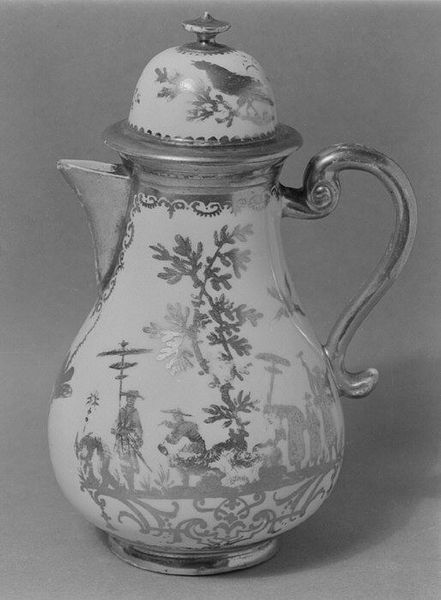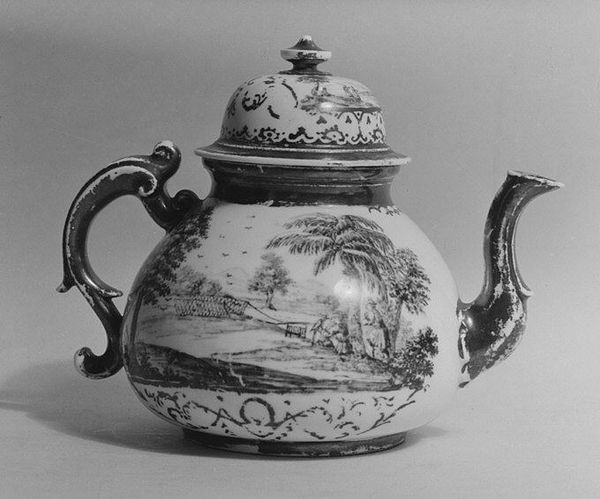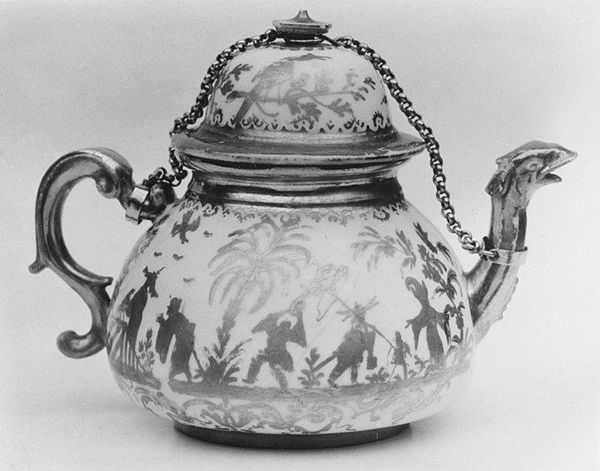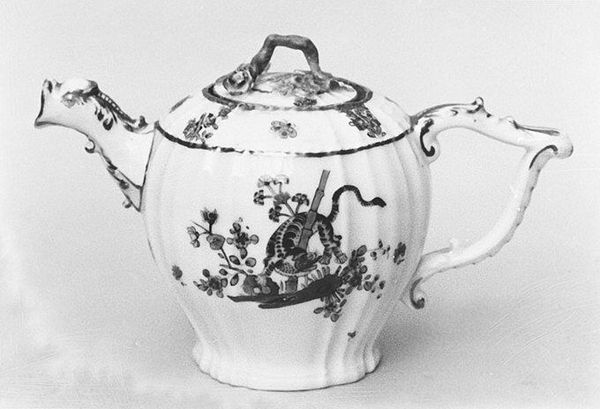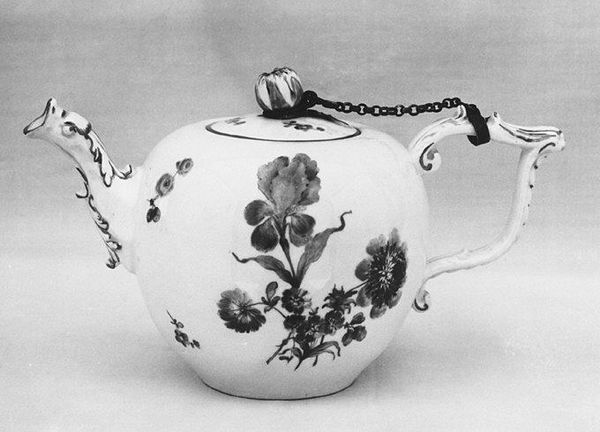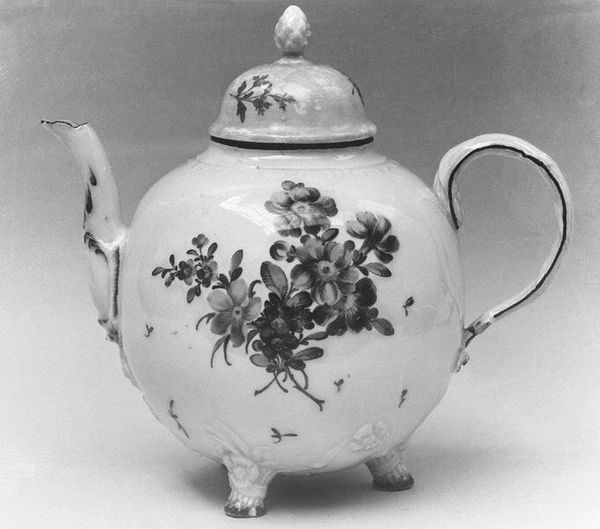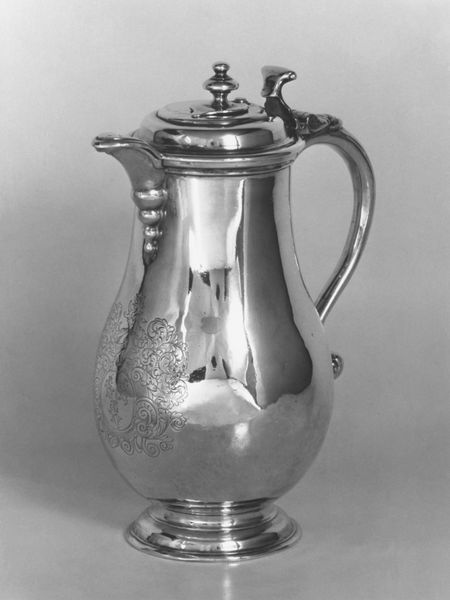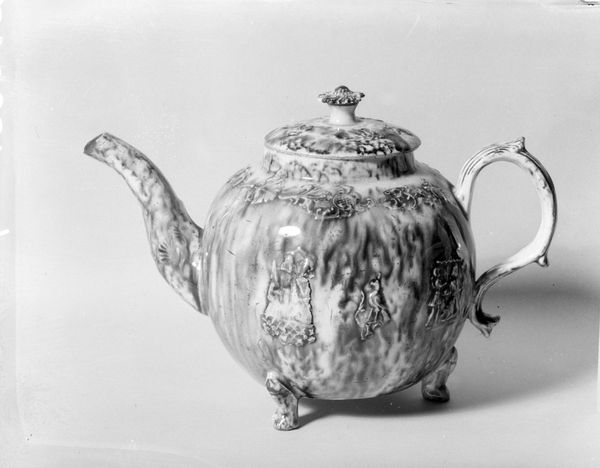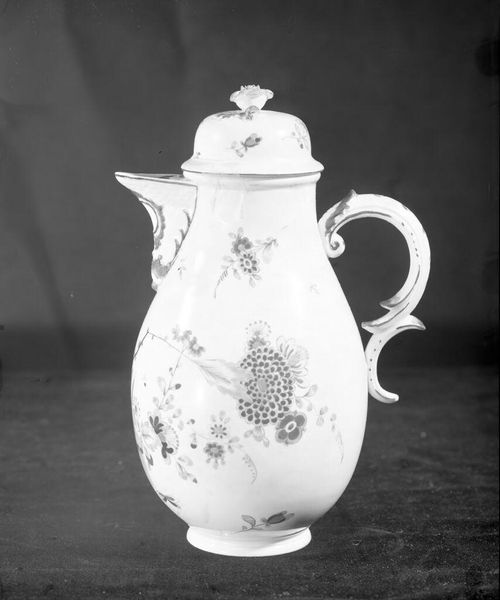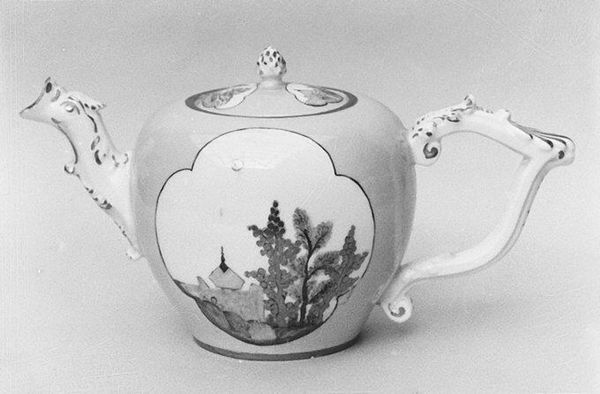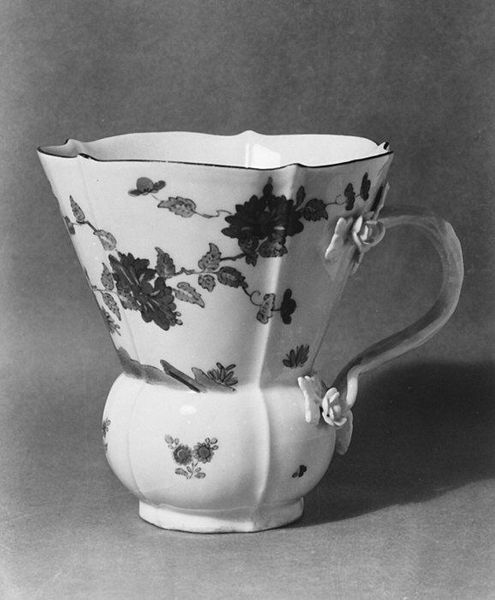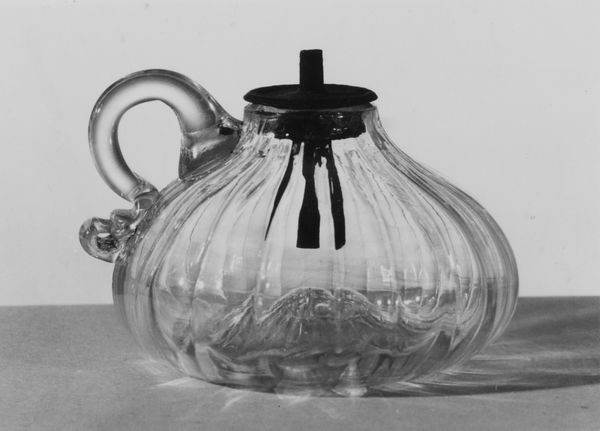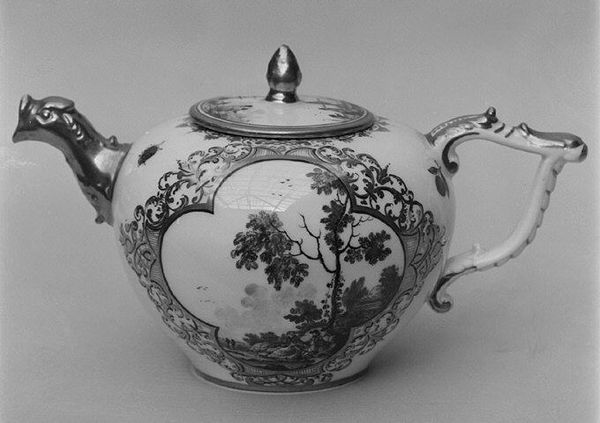
ceramic, porcelain, sculpture
#
ceramic
#
porcelain
#
sculpture
#
decorative-art
#
rococo
Dimensions: Overall: 4 1/4 × 6 in. (10.8 × 15.2 cm)
Copyright: Public Domain
Curator: Here we have a delicate porcelain teapot created by the Meissen Manufactory between 1715 and 1735, currently held at the Metropolitan Museum of Art. The piece exemplifies Rococo design, exhibiting fine detail in ceramic and sculpting techniques. Editor: The ornate scenes contrast the object's modest size; its presence carries class privilege and historical assumptions concerning who had the privilege to drink tea, revealing complex class divides embedded within material culture. Curator: The symbols and illustrative nature are indicative of stories being told. Consider the carriage and rider imagery along the sides. This recalls idealized rural landscapes of that period. We are invited to consider a privileged worldview. Editor: Beyond its aesthetic charm, tea drinking held significance within elite social circles as an activity central to empire expansion, with all the problems that accompanied such colonialistic mindsets of power and race that defined interactions with China during this era, reflecting socio-political tensions deeply intertwined with trade and taste. Curator: Yes, its very existence signals social stratification and global power dynamics inherent to eighteenth-century European culture. The act of displaying objects like these underscores an intent to impress with elegance and knowledge concerning access into refined social spheres where these goods held weight culturally beyond usefulness alone. Editor: Viewing objects divorced from these complex backgrounds reduces them merely aesthetic. How then can curators engage visitors by provoking critical considerations regarding exploitation inherent even within moments seemingly domestic. The decorative qualities embody far complex histories that persist now! Curator: That's a point worth emphasizing. Artifacts transmit meanings reflecting a bygone reality, but simultaneously reveal continuities concerning disparities along lines related status within structures defining past events while impacting us today. The piece demands attention to its exquisite beauty yet promotes discussion regarding the socio-political structures underlying production techniques Editor: Examining even this small ceramic inspires deeper appreciation of complex past events which continually frame social experiences and norms; we hope our exchange ignites exploration concerning assumptions and the realities inherent to those.
Comments
No comments
Be the first to comment and join the conversation on the ultimate creative platform.
